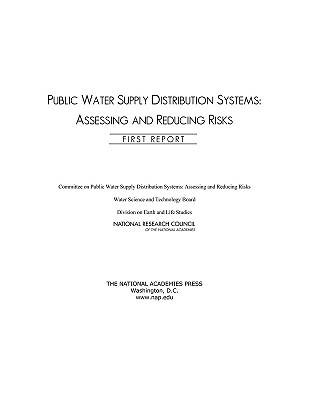
- Afhalen na 1 uur in een winkel met voorraad
- Gratis thuislevering in België vanaf € 30
- Ruim aanbod met 7 miljoen producten
- Afhalen na 1 uur in een winkel met voorraad
- Gratis thuislevering in België vanaf € 30
- Ruim aanbod met 7 miljoen producten
Zoeken
Public Water Supply Distribution Systems
Assessing and Reducing Risks: First Report
National Research Council, Division on Earth and Life Studies, Water Science and Technology Board, Committee on Public Water Supply Distribution Systems Assessing
Paperback | Engels
€ 20,95
+ 41 punten
Omschrijving
The Water Science and Technology Board has released the first report of the Committee on Public Water Supply Distribution Systems: Assessing and Reducing Risks, which is studying water quality issues associated with public water supply distribution systems and their potential risks to consumers. The distribution system, which is a critical component of every drinking water utility, constitutes a significant management challenge from both an operational and public health standpoint. This first report was requested by the EPA, as the agency considers revisions to the Total Coliform Rule with potential new requirements for ensuring the integrity of the distribution system. This first report identifies trends relevant to the deterioration of drinking water quality in distribution systems and prioritizes issues of greatest concern according to high, medium, and low priority categories. Of the issues presented in nine EPA white papers that were reviewed by the committee, cross connections and backflow, new or repaired water mains, and finished water storage facilities were judged by the committee to be of the highest importance based on their associated potential health risks. In addition, the report noted that two other issues should also be accorded high priority: premise plumbing and distribution system operator training. This first report will be followed in about 18 months by a more comprehensive final report that evaluates approaches for risk characterization and identifies strategies that could be considered to reduce the risks posed by water-quality deteriorating events.
Specificaties
Betrokkenen
- Auteur(s):
- Uitgeverij:
Inhoud
- Aantal bladzijden:
- 57
- Taal:
- Engels
Eigenschappen
- Productcode (EAN):
- 9780309096287
- Verschijningsdatum:
- 1/04/2005
- Uitvoering:
- Paperback
- Formaat:
- Trade paperback (VS)
- Afmetingen:
- 216 mm x 279 mm

Alleen bij Standaard Boekhandel
+ 41 punten op je klantenkaart van Standaard Boekhandel
Beoordelingen
We publiceren alleen reviews die voldoen aan de voorwaarden voor reviews. Bekijk onze voorwaarden voor reviews.











